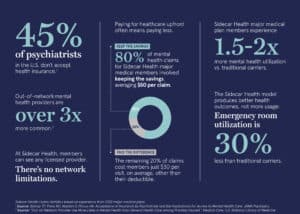181 rural hospitals have closed since 2005—see the states that have been impacted
Aine Givens
December 1, 2021
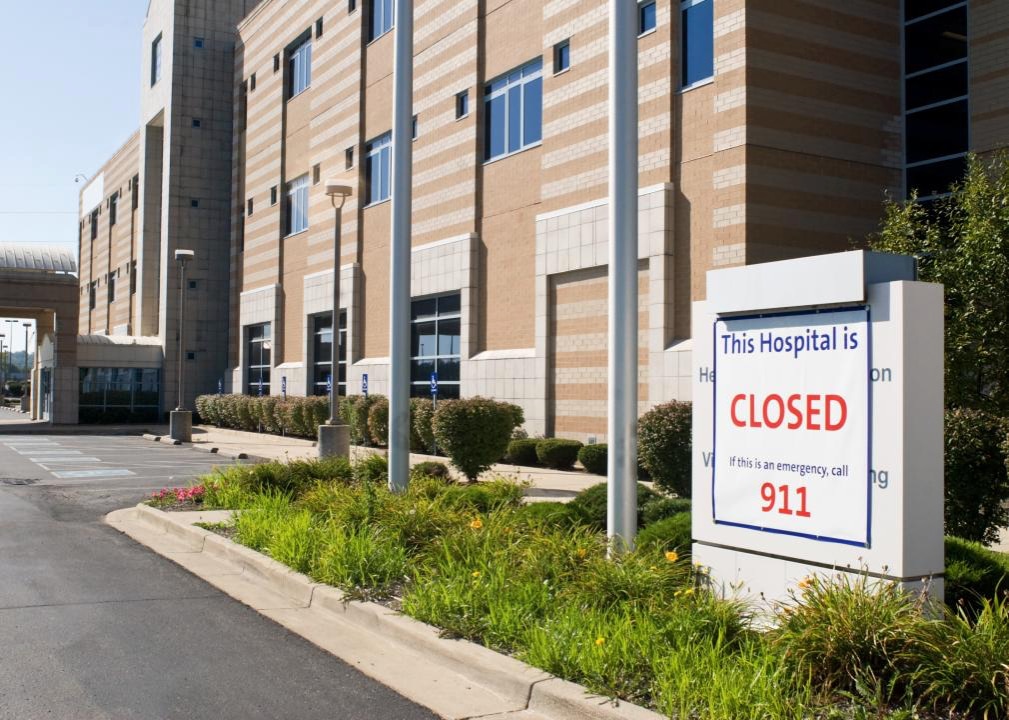
181 rural hospitals have closed since 2005—see the states that have been impacted
Rural hospitals have long struggled financially and the situation is getting worse. In the mid-1940s, Congress provided funding to build hospitals in rural areas, leading to a rise in their numbers, especially in the South. By the 1980s and 1990s, those hospitals began closing, partly a result of Medicare spending.
Since 2005, 181 rural hospitals have shut their doors. The causes are many: an older, poorer population; advances in outpatient medical procedures; and more recently, a decision among many Southern states against expanding Medicaid under the Patient Protection and Affordable Care Act, aka ACA. That leaves hospitals with a greater share of uncompensated care as uninsured patients continue to be treated. The coronavirus pandemic made matters worse by delaying nonessential services that bring in revenue. The fallout from hospital closings can be severe. Trauma centers have shut down, as have obstetric units, putting residents’ health at risk.
Sidecar Health cited data from the University of North Carolina Sheps Center for Health Services Research to identify how states have been affected by the growing number of rural hospital closures. Data includes closures from 2005 to the present.
A small or isolated rural area is designated by the United States Department of Agriculture’s rural-urban commuting area (RUCA) codes. A small area means most people who commute stay within a town of under 10,000 people. An isolated area means the flow of people remains outside of metropolitan areas and small towns.
About 57 million people in the U.S. live in rural communities, leaving a portion of Americans without easy access to emergency health care. The Biden administration’s recent announcement to invest $7.5 Billion in relief funds in rural areas disproportionately affected by the coronavirus pandemic may begin to ease access to health care in rural communities. Further action from policymakers in Congress is the only other direct way to solve for these health care deserts.
Get a quote for health insurance today!

#36. Maryland
– Total rural hospitals closed since 2005: 1 (one in small or isolated rural communities)
– Total beds lost: 3
Edward W. McCready Memorial Hospital in Crisfield, Maryland, a community of 2,500 on the Eastern Shore of the Chesapeake Bay, was absorbed into the much larger Peninsula Regional Health Systems in 2019. McCready pursued the affiliation after years of declining use. A free-standing clinic was built in place of the smaller hospital, offering round-the-clock emergency care, physical and speech therapy, imaging and laboratory services, behavioral health services, and family health care. Offering emergency care is important. A 2016 Kaiser Family Foundation report found that hospital closures reduced access to such care.

#35. Alaska
– Total rural hospitals closed since 2005: 1 (none in small or isolated rural communities)
– Total beds lost: 12
Sitka Community Hospital in 2019 was integrated into Mount Edgecumbe Medical Center, also in Sitka, which is on Baranof Island in Southeast Alaska and accessible by plane or boat. The Southeast Alaska Regional Health Consortium now operates a family clinic and other services at the former community hospital, while emergency care is provided at Mount Edgecumbe Medical Center, 2 miles away. Nearly every state had a hospital in danger of shutting its doors before the coronavirus pandemic, which only exacerbated the trend. In 2016, a KCAW radio report noted that Mount Edgecumbe Hospital was built in the 1940s; the city opened Sitka Community Hospital in 1956; and between the two, the community had two emergency rooms, obstetrics centers, and physical therapy facilities.Looking for a health access plan? Learn more about our affordable, easy to use options.

#34. Wisconsin
– Total rural hospitals closed since 2005: 1 (none in small or isolated rural communities)
– Total beds lost: 25
Franciscan Skemp Medical Center in Arcadia, Wisconsin, a city of nearly 3,000 northwest of Milwaukee, closed in 2011, leaving the community without a hospital for the first time in 75 years, the La Crosse Tribune reported. The hospital said it was operating at a loss with too few patients, but would keep a nursing home open. The Mayo Clinic Health System—Franciscan Healthcare offers primary and specialty care in Arcadia.
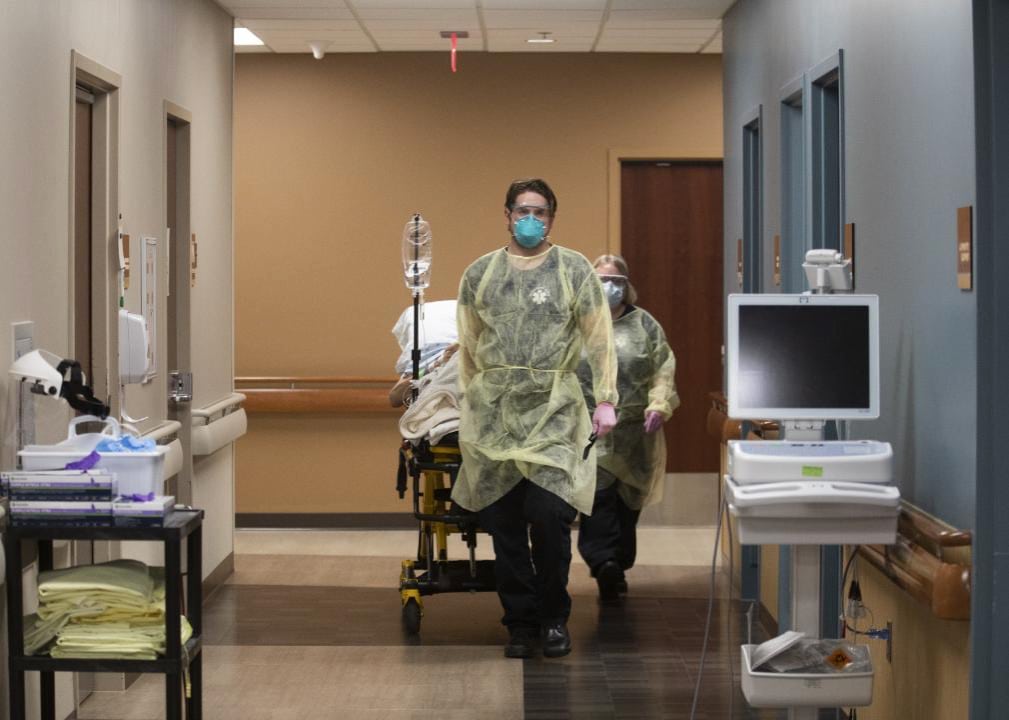
#33. North Dakota
– Total rural hospitals closed since 2005: 1 (one in small or isolated rural communities)
– Total beds lost: 25
Richardton Memorial Hospital in Richardton, North Dakota, a community of 529 people, became a skilled nursing facility in 2009 with the help of a $950,000 federal grant. Its closure meant that under federal rules, St. Joseph’s Hospital in Dickson, North Dakota, about 25 miles away, became eligible for a critical access designation, which allows more favorable Medicare payments. Critical access hospitals must be at least 35 miles from each other and Richardton Memorial already held that status. St. Joseph’s Hospital recorded $13.2 million in operational losses in 2002 until June 2007, according to The Dickinson Press.
Learn more: What is Sidecar Health?
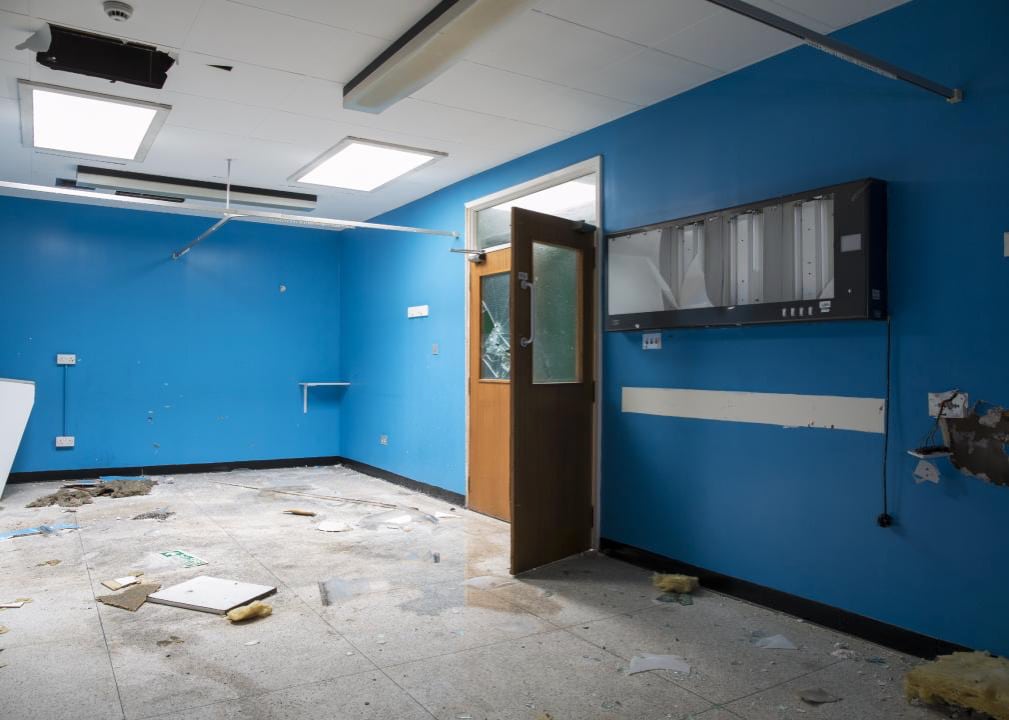
#32. Washington
– Total rural hospitals closed since 2005: 1 (none in small or isolated rural communities)
– Total beds lost: 25
Deer Park Hospital in Deer Park, Washington, closed in 2008, after failing to attract enough patients. According to The Spokesman-Review, the hospital admitted on average fewer than one patient a day, with many residents traveling instead to hospitals 18 miles away in Spokane, Washington. Losing patients to nearby larger medical centers has been a problem for smaller rural hospitals, according to the Kaiser Family Foundation, one that can exacerbate a perception that they are delivering poor care.

#31. New Jersey
– Total rural hospitals closed since 2005: 1 (none in small or isolated rural communities)
– Total beds lost: 83
William B. Kessler Memorial Hospital in Hammonton, New Jersey, shut its doors in 2009 after years of financial struggles, including filing for Chapter 11 bankruptcy in 2006. AtlantiCare Health System opened a satellite emergency care department and medical imaging department there, and was planning an ambulatory care center nearby, according to The Press of Atlantic City. Later, a health care investment group bought the hospital to offer many of the same services, but through a variety of providers.
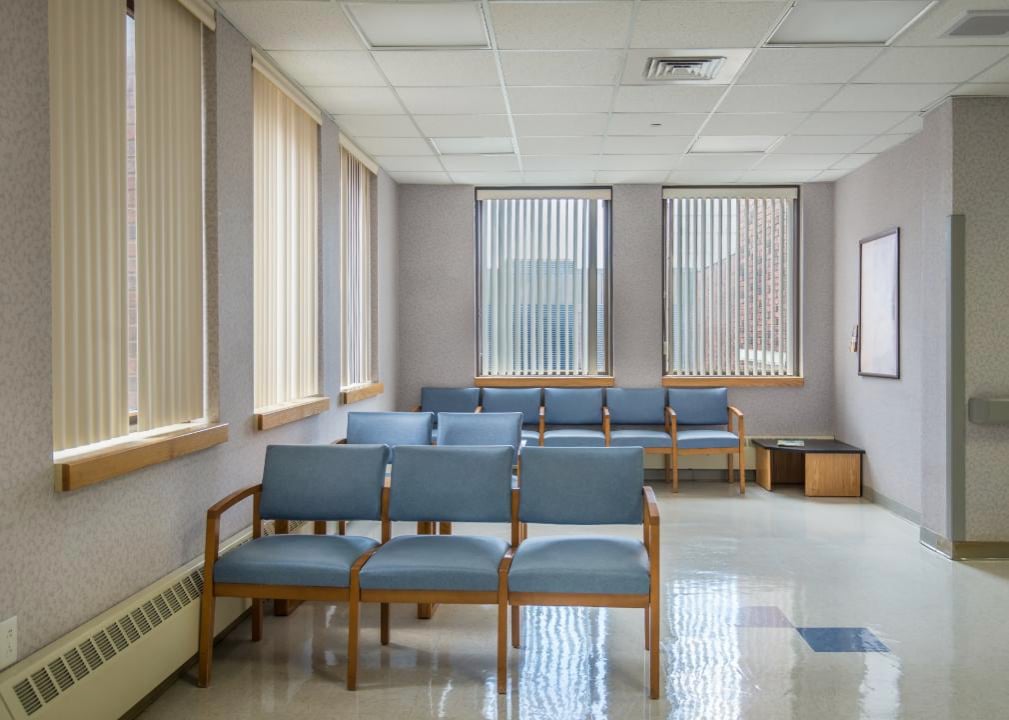
#30. Massachusetts
– Total rural hospitals closed since 2005: 1 (none in small or isolated rural communities)
– Total beds lost: 98
North Adams Regional Hospital shut suddenly in 2014, angering residents and spurring calls for an investigation. Berkshire Health Systems bought the property and then was forced by a court order to reopen the emergency room. It went on to expand the health care services it offers.

#29. Nevada
– Total rural hospitals closed since 2005: 2 (one in small or isolated rural communities)
– Total beds lost: 25
Residents in Tonopah, Nevada, were left without a hospital within 100 miles when the Nye Regional Medical Center closed in 2015, two years after financial woes sent it into bankruptcy. The hospital was gradually replaced by a clinic; a community paramedic program; and services in physical therapy, family medicine, and mental health. But in the meantime, some people put off getting care for conditions that only worsened. In the Duck Valley Reservation, 100 miles north of Elko, Nevada, a conversion produced the Owyhee Community Health Facility, a rural outpatient clinic that serves the Shoshone-Paiute Tribes.

#28. Ohio
– Total rural hospitals closed since 2005: 2 (one in small or isolated rural communities)
– Total beds lost: 33
Affinity Medical Center in northeast Massillon, Ohio, closed in 2018 after struggling with losses for six years. A nearby hospital was only 20 minutes away. There were 43 hospitals operating at a deficit in the state in 2015 and another 17 had operating margins of less than 2%, according to Columbus Business First. As has occurred in other states, Ohio hospitals have been converted into outpatient centers, free-standing emergency rooms, and in a new trend, microhospitals of 15 beds.

#27. Nebraska
– Total rural hospitals closed since 2005: 2 (two in small or isolated rural communities)
– Total beds lost: 36
MercyOne Oakland Medical Center in Oakland, Nebraska, became in 2021 the latest hospital to close in the state, even in the midst of the pandemic. Officials pointed to low numbers of in-patient and emergency room patients. Its two clinics in Oakland will remain open and MercyOne said it might build a medical practice in the area. Tilden Community Hospital in Tilden, Nebraska, became an outpatient care center in 2014 after running at deficits of up to $60,000 a month.
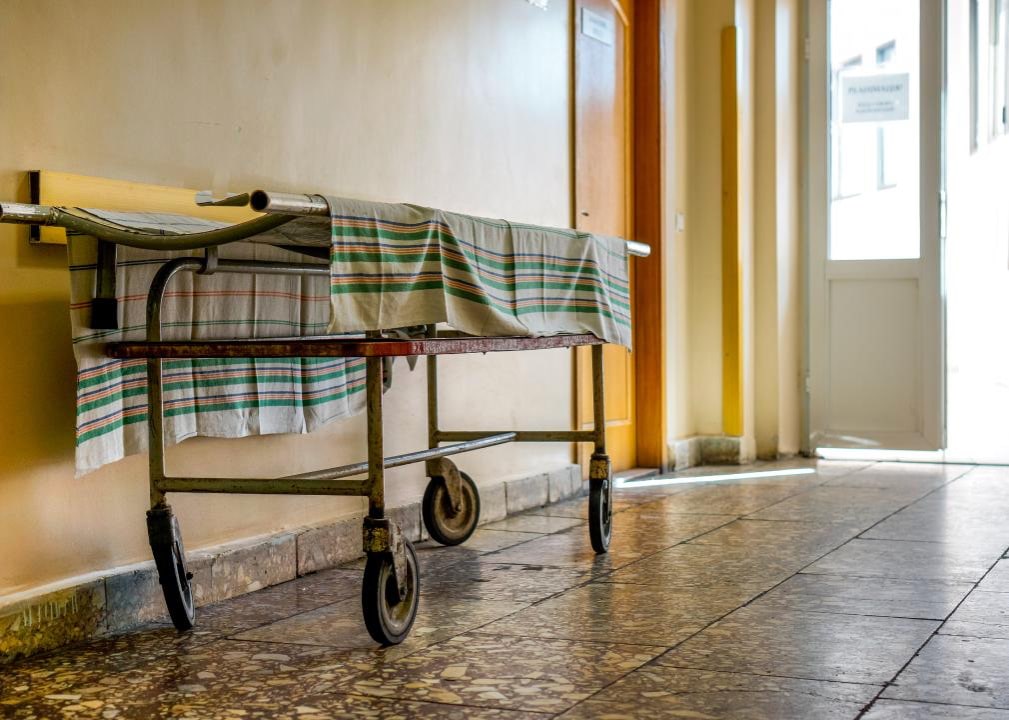
#26. Virginia
– Total rural hospitals closed since 2005: 2 (none in small or isolated rural communities)
– Total beds lost: 45
Virginia’s two Democratic senators were among a bipartisan group that introduced the Save Rural Hospitals Act of 2021, which would take on a funding formula that leads to disproportionately low Medicare payments for rural hospitals in areas with low wages. It also would provide money for rural hospitals operating on very thin margins. Rural hospitals have continued to shut down at record rates even during the pandemic, with more than 20 closing in 2020.

#25. Michigan
– Total rural hospitals closed since 2005: 2 (one in small or isolated rural communities)
– Total beds lost: 48
Michigan’s rural hospitals warned in 2020 that the coronavirus could force even more closures amid pandemic-related disruptions. Patients were delaying elective surgeries and procedures such as mammograms, all of which bring in revenue for the hospitals. In August 2021, the governor announced a $13 million grant from the federal Health Resources and Services Administration for 51 small, rural hospitals. The money was to be used for COVID-19 testing and treatment.
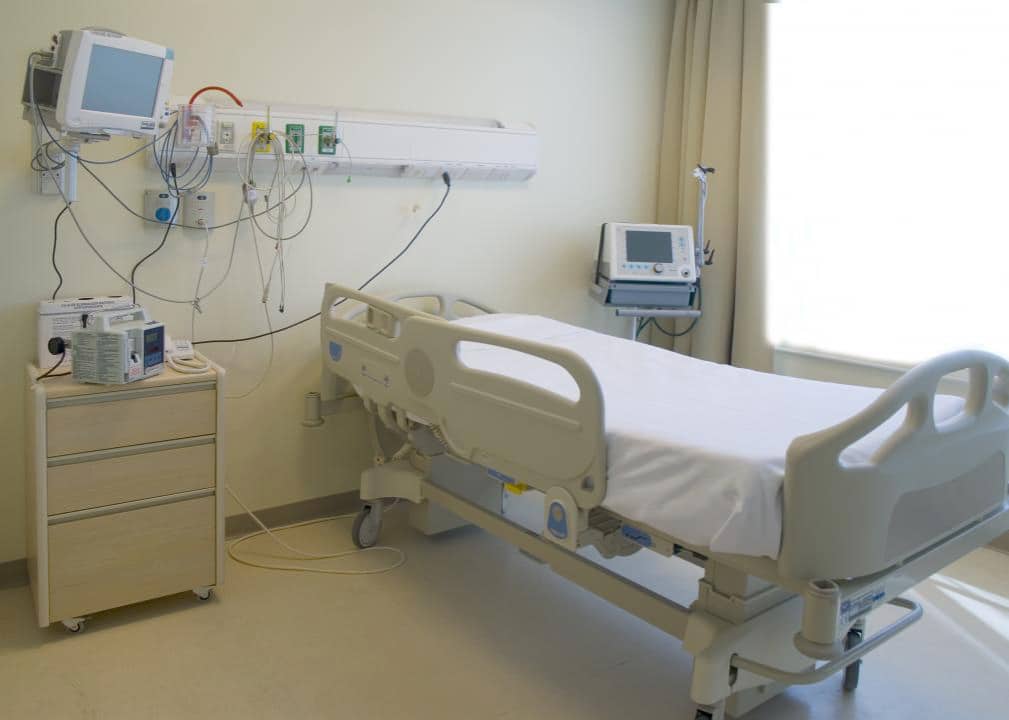
#24. Indiana
– Total rural hospitals closed since 2005: 2 (none in small or isolated rural communities)
– Total beds lost: 70
Most of the state’s rural hospitals have been designated critical access hospitals, originally meant to provide for higher Medicare payments, but which include limitations on size. Although some rules have been eased during the pandemic, many of the hospitals have only 25 in-patient beds and a couple of intensive care unit beds, according to Indiana Public Radio station WFYI. There are 16 counties in the state that lack a hospital at all. Like hospitals elsewhere, Indiana’s are taking in less income as people delay procedures that would be paid for by private insurance.
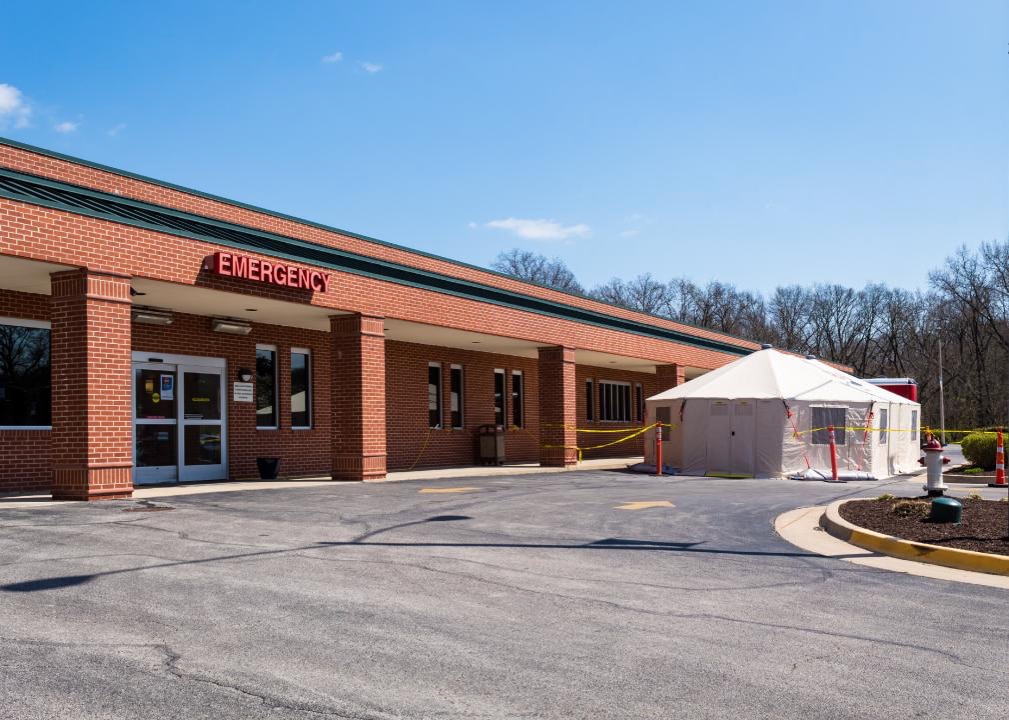
#23. Illinois
– Total rural hospitals closed since 2005: 2 (none in small or isolated rural communities)
– Total beds lost: 119
The coronavirus heightened the pressure on rural hospitals, as many lacked enough staff or hospital beds to treat those who were ill, according to a group from Southern Illinois University and the University of Illinois examining rural health. Many of those hospitals don’t have an intensive care department, but as the larger urban hospitals filled, the rural hospitals were unable to transfer patients as they normally would. In April, U.S. Sen. Dick Durbin reintroduced the bipartisan Rural Hospital Closure Relief Act to help rural hospitals in danger of closing. It would allow more to qualify as critical access hospitals, becoming eligible for Medicare funds, by easing the rule requiring 35 miles between the hospitals.
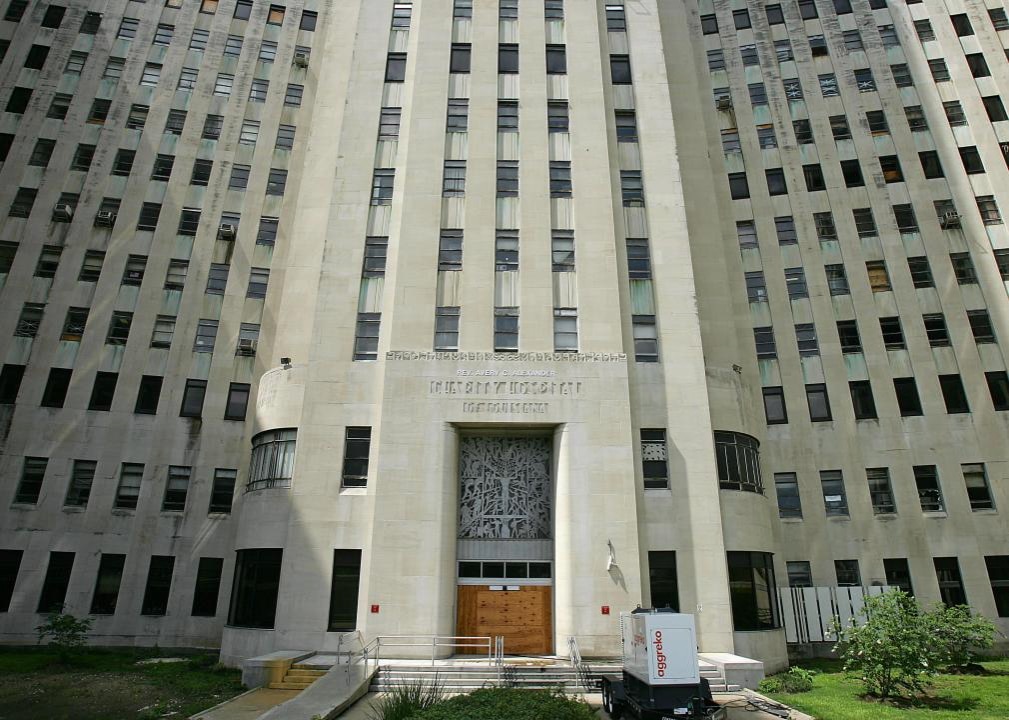
#22. Louisiana
– Total rural hospitals closed since 2005: 2 (none in small or isolated rural communities)
– Total beds lost: 127
Louisiana’s rural hospitals were helped by the state’s expansion of eligibility for Medicaid in 2016, according to the Louisiana Budget Project. By 2018, more than 487,000 had signed up for Medicaid. The coronavirus sparked another surge of 208,000 people from November 2019 to November 2020. Hospitals in states where Medicaid eligibility was expanded saw their uncompensated costs drop, according to a paper from The Commonwealth Fund.
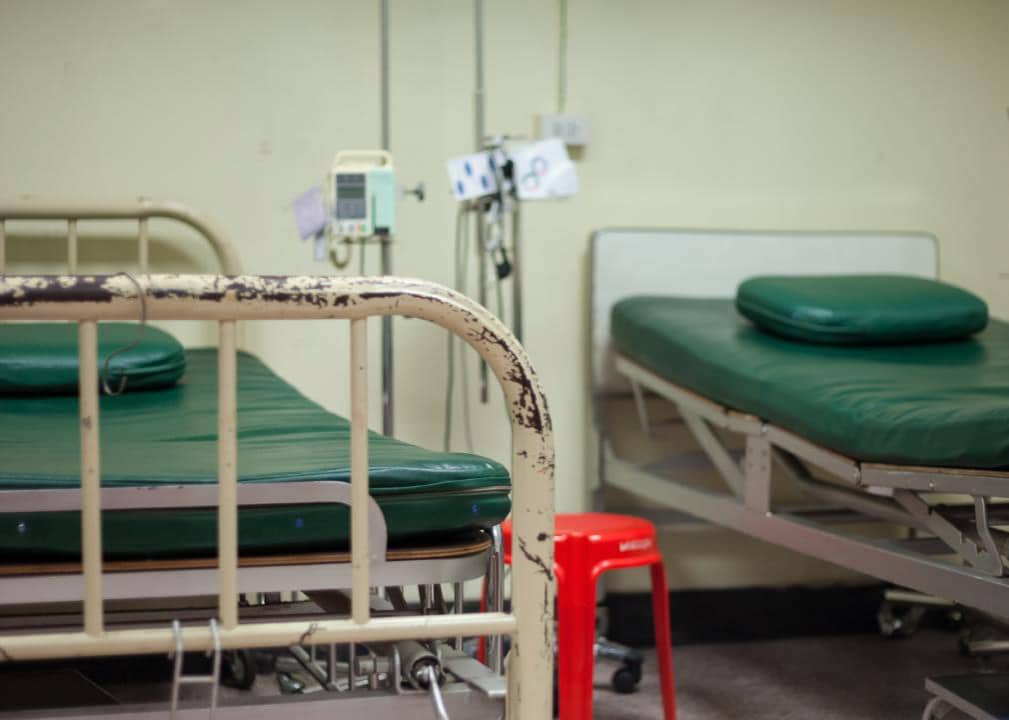
#21. South Dakota
– Total rural hospitals closed since 2005: 3 (three in small or isolated rural communities)
– Total beds lost: 44
The South Dakota Office of Rural Health ranks the state’s 66 counties for residents’ health, their access to health care, and other factors. Ten rural counties, some of which are home to Native American reservations, are consistently in the bottom quartile in all categories, according to the Argus Leader. As of November 2021, South Dakota has not expanded Medicaid eligibility. Meanwhile the pandemic was cutting into hospitals’ revenues as patients stayed away and delayed noncritical procedures.

#20. Maine
– Total rural hospitals closed since 2005: 3 (one in small or isolated rural communities)
– Total beds lost: 126
Rural hospitals lost $20 million over five years, according to a briefing by the Maine Hospital Association in 2019. Of the eight hospitals that have five years of consecutive losses, seven are in rural areas, but the hospitals also forgive $45 million on patients’ bills each year. Meanwhile Maine’s rural residents are older and facing more unemployment and more chronic diseases.
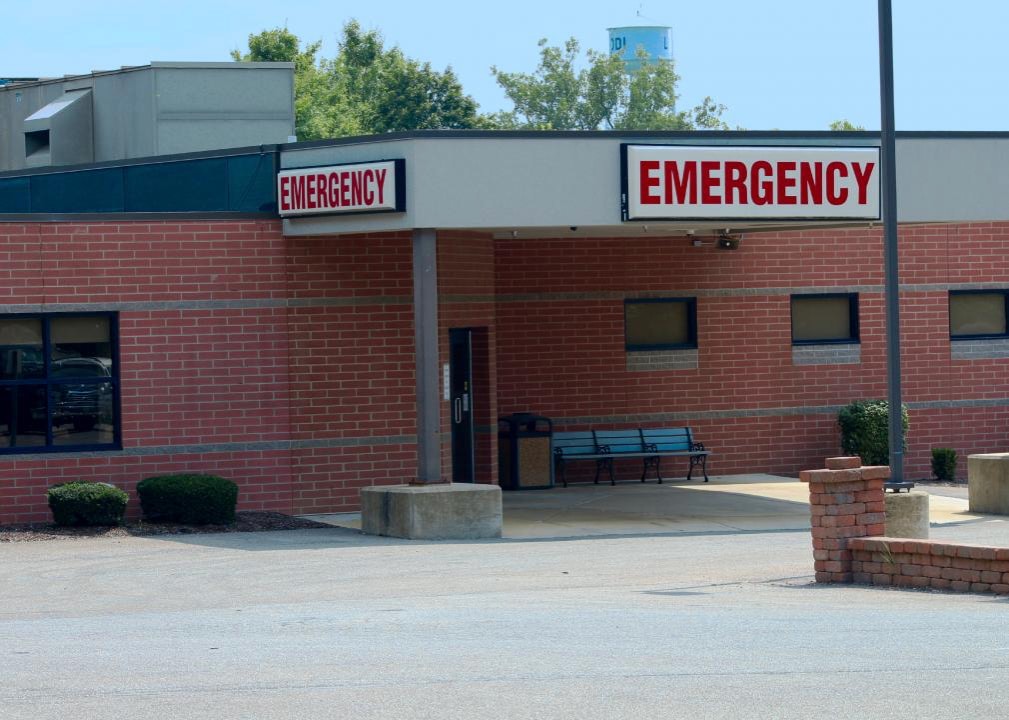
#19. Arkansas
– Total rural hospitals closed since 2005: 3 (one in small or isolated rural communities)
– Total beds lost: 143
Rural hospitals in Arkansas have done better than those in neighboring states because it expanded Medicaid eligibility as permitted under the Patient Protection and Affordable Care Act, according to the Arkansas Center for Health Improvement and the Arkansas Foundation for Medical Care. Even so, in 2019 the De Queen Medical Center in De Queen, Arkansas, became the first to close after the expansion because of financial problems. A new Sevier County hospital is under construction.

#18. Kentucky
– Total rural hospitals closed since 2005: 4 (three in small or isolated rural communities)
– Total beds lost: 114
A 2020 report from the Kentucky Hospital Association found that up to 28 rural hospitals were at risk of closing. The state’s 68 rural hospitals are heavily reliant on government payments, with Kentucky having the sixth-highest percentage of patients covered by Medicaid or Medicare. The report estimated that even with federal relief funds, the hospitals will rack up losses of about $1.3 million due to the pandemic. The association urged lawmakers not to cut reimbursement rates.
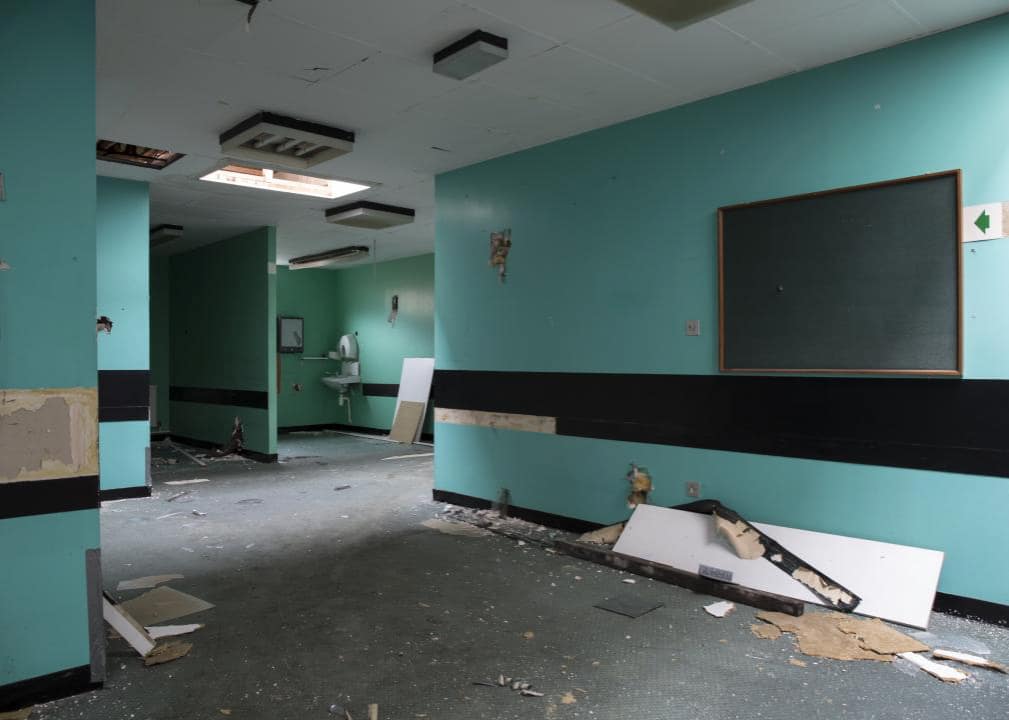
#17. Arizona
– Total rural hospitals closed since 2005: 4 (none in small or isolated rural communities)
– Total beds lost: 135
Nine rural hospitals are in danger of closing because of financial reasons, noted a 2019 report from Protect Our Care, a health care advocacy group. Among the three that closed after 2010, only one shut its doors after the state expanded Medicaid as allowed under the Affordable Care Act. And under the ACA, between 2013 and 2015, Arizona hospitals’ uncompensated costs dropped by $458 million or 58%.
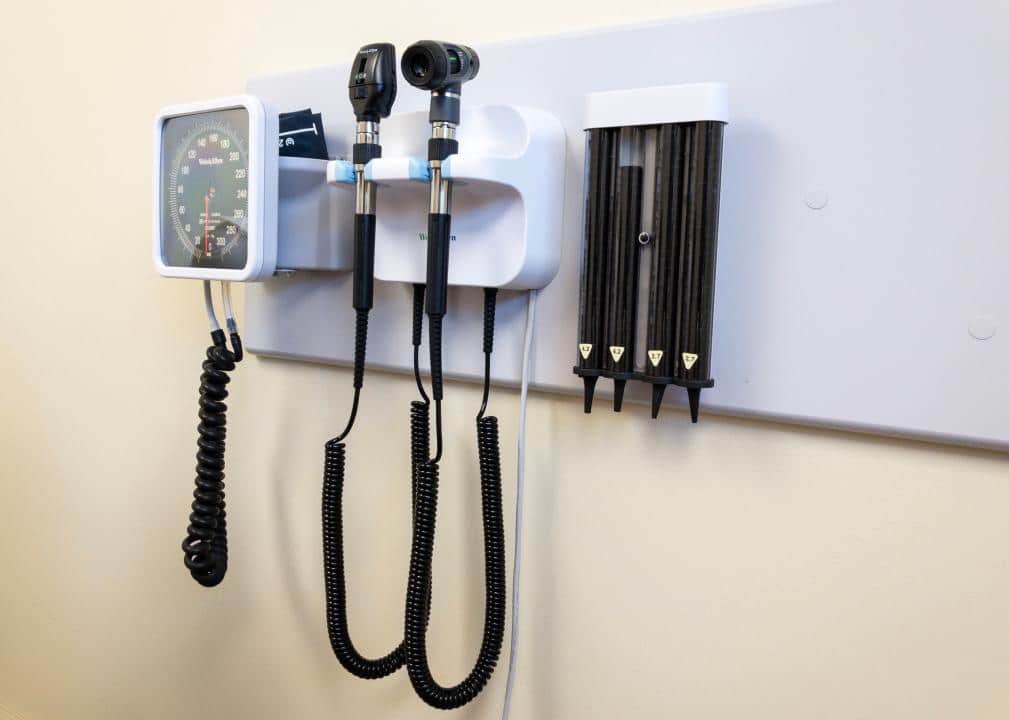
#16. South Carolina
– Total rural hospitals closed since 2005: 4 (two in small or isolated rural communities)
– Total beds lost: 208
Former Gov. Nikki Haley created a pool of $40 million to help the merger of large and smaller hospitals, both designated as critical access hospitals. The larger hospital was required to make a 10-year commitment to the rural community. Despite the effort, three rural hospitals closed under Haley’s administration. The Center for Budget and Policy Priorities notes that all four of the closed hospitals in the state were in counties with a higher percentage of Black residents than the state average.
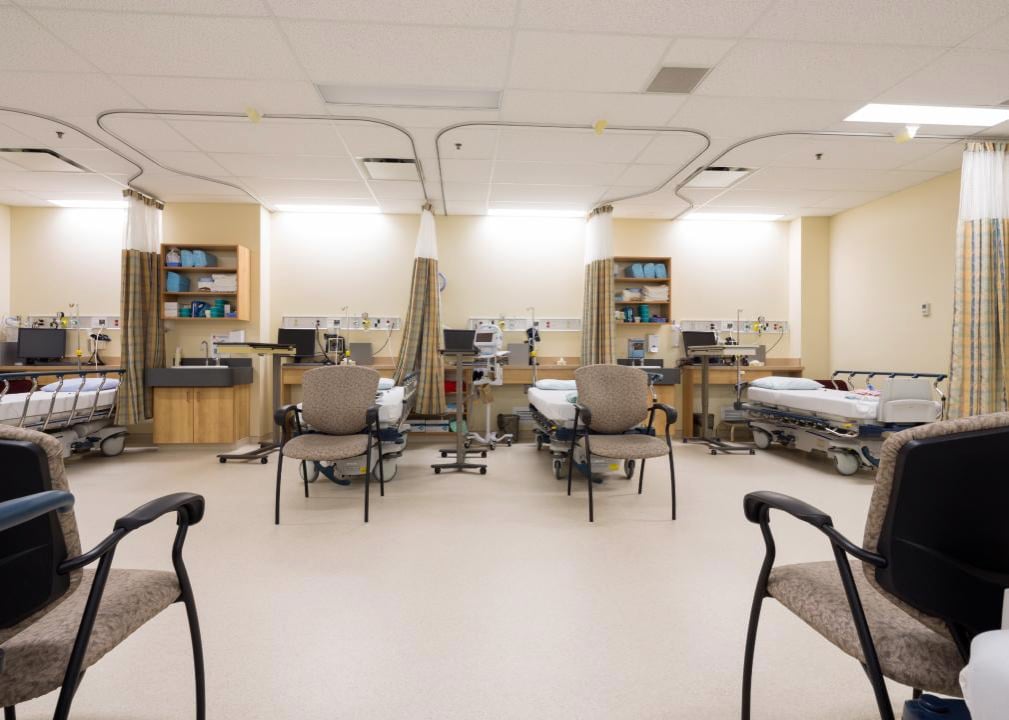
#15. New York
– Total rural hospitals closed since 2005: 5 (two in small or isolated rural communities)
– Total beds lost: 145
Lake Shore Health Care Center in New York’s Chautauqua County near Lake Erie shut down at the end of 2019, when it was grappling with a $7 million deficit. The Seneca Nation said the hospital’s closing would make it more difficult for residents of its Cattaraugus Territory to get health care. Patients at all hospitals that closed in New York tended to be racial and ethnic minorities who were uninsured and perhaps undocumented, according to Elisabeth Benjamin, a health policy expert at the Community Service Society.
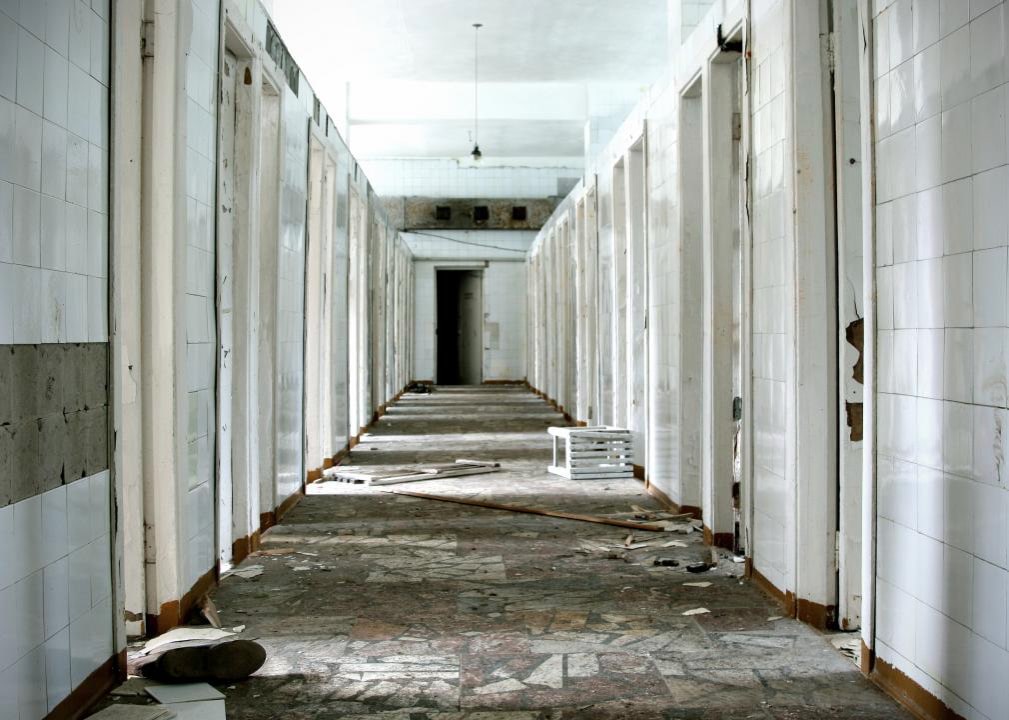
#14. West Virginia
– Total rural hospitals closed since 2005: 5 (one in small or isolated rural communities)
– Total beds lost: 196
Williamson Memorial Hospital, the only hospital in Mingo County, West Virginia, closed in May 2020 after going into Chapter 11 bankruptcy and just as the coronavirus hit. Its revenue was cut by half as nonessential procedures came to a stop, emergency room visits dropped, and its hope of being acquired by another hospital was upended. The pandemic has worsened the financial situation of rural hospitals across the country.
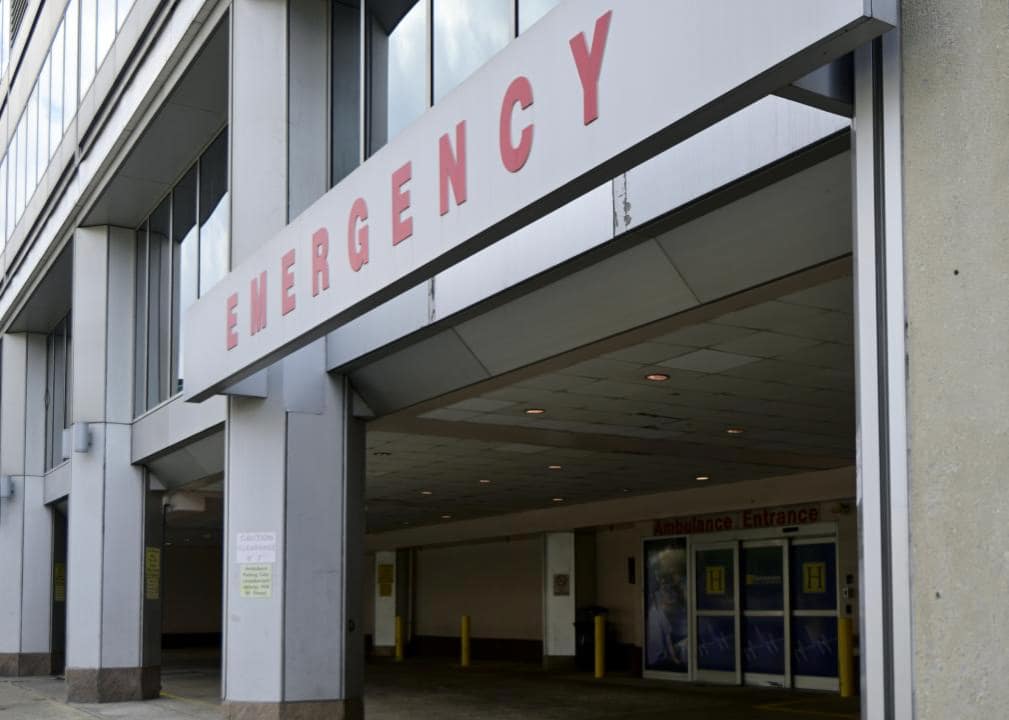
#13. Pennsylvania
– Total rural hospitals closed since 2005: 5 (one in small or isolated rural communities)
– Total beds lost: 225
Pennsylvania has started an alternative payment model—with hospitals receiving what are called global budget payments instead of fee for services—to try to help rural hospitals with their financial problems. Hospitals are given a fixed amount for a certain number of services. The Pennsylvania Rural Health Model was developed with the federal Centers of Medicare and Medicaid Services, and now has 18 rural hospitals and six payers participating.
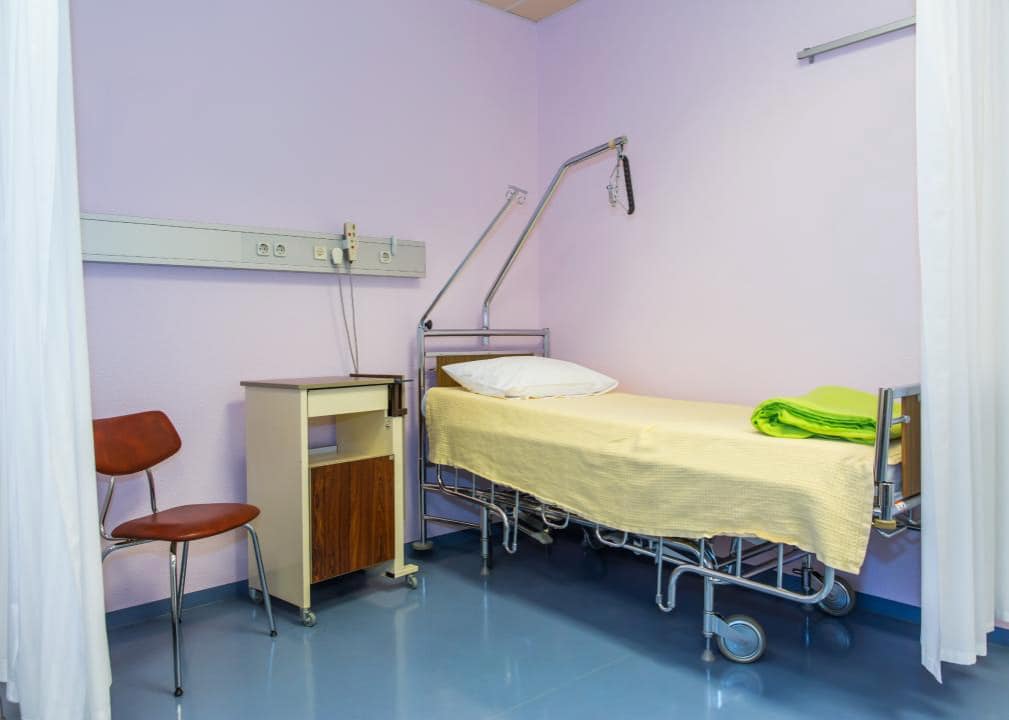
#12. Minnesota
– Total rural hospitals closed since 2005: 6 (four in small or isolated rural communities)
– Total beds lost: 230
A study from the University of Minnesota in May 2021 found that the closing of rural hospitals strained municipal providers of emergency medical services, in particular, as they tried to get patients to other hospitals. The average length of ambulance trips for municipal Emergency Medical Service agencies rose 22%. For private EMS agencies, the length rose 10%. Private companies are free to leave once their contracts expire.
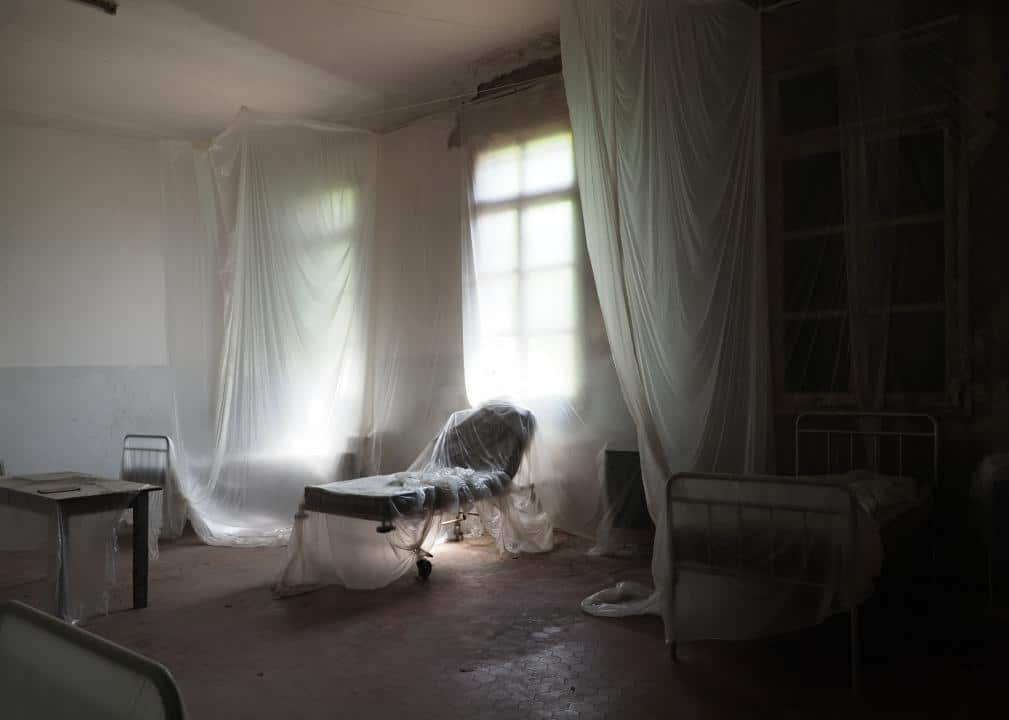
#11. Mississippi
– Total rural hospitals closed since 2005: 6 (three in small or isolated rural communities)
– Total beds lost: 290
Mississippi is among the Southern states that have declined to expand Medicaid under the ACA, a decision linked to higher uncompensated costs. According to the Kaiser Family Foundation, Medicaid expansion improved hospital operating margins and financial performance, and reduced the likelihood that a hospital would close, especially in rural areas. The Mississippi State Medical Association is searching for ways to expand Medicaid despite opposition from the governor. Almost half of all rural hospitals are at risk of closing, and in 2019, the state’s hospitals had more than $600 million in uncompensated care.

#10. Alabama
– Total rural hospitals closed since 2005: 7 (five in small or isolated rural communities)
– Total beds lost: 180
Like Mississippi, Alabama is among the swath of Southern states that has not expanded Medicaid coverage. Before the pandemic, 30 rural hospitals were at risk of closing and the financial condition of many have since gotten worse. Hospitals in the state need about $200 million in federal funds to make up for lost revenue, according to the president of the Alabama Hospital Association.
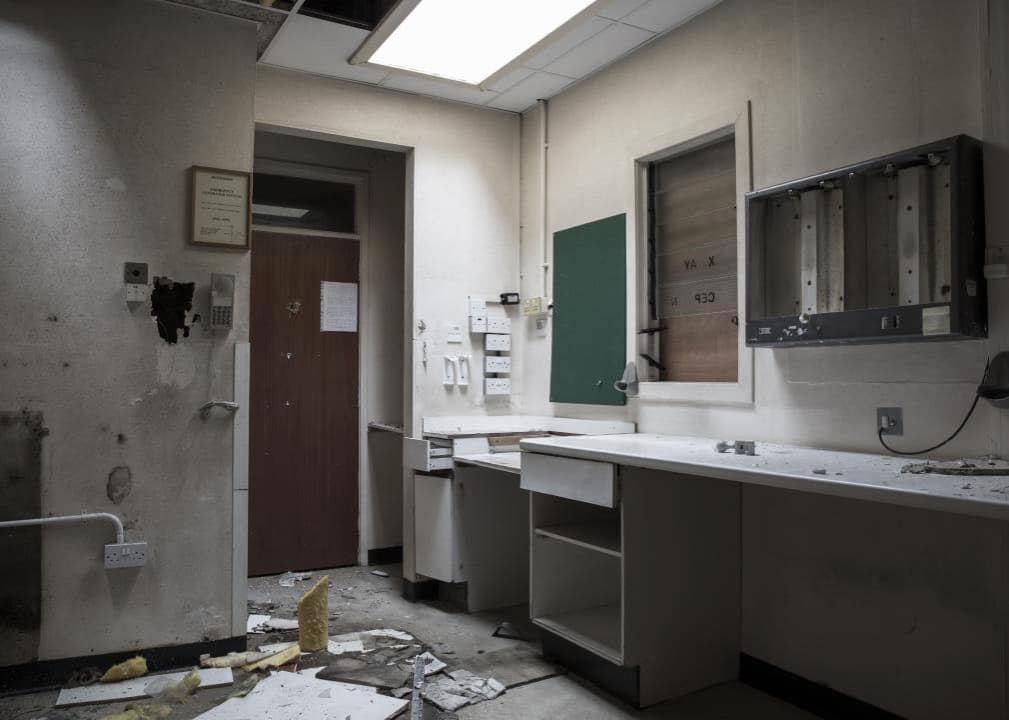
#9. Florida
– Total rural hospitals closed since 2005: 8 (three in small or isolated rural communities)
– Total beds lost: 294
In 2020 as COVID-19 took off, two rural hospitals closed in Florida agricultural areas that are also home to state penitentiaries. Federal officials set aside $10 billion from the coronavirus relief bill in April 2020 for rural health clinics and hospitals, enabling them to prepare for the pandemic. The Department of Health and Human Services noted that most operate on very thin margins. Hospitals were filled in Florida in the summer of 2021 as COVID-19 cases soared, but since then hospitalizations have dropped. In all, about 60,800 people have died as of November 2021.
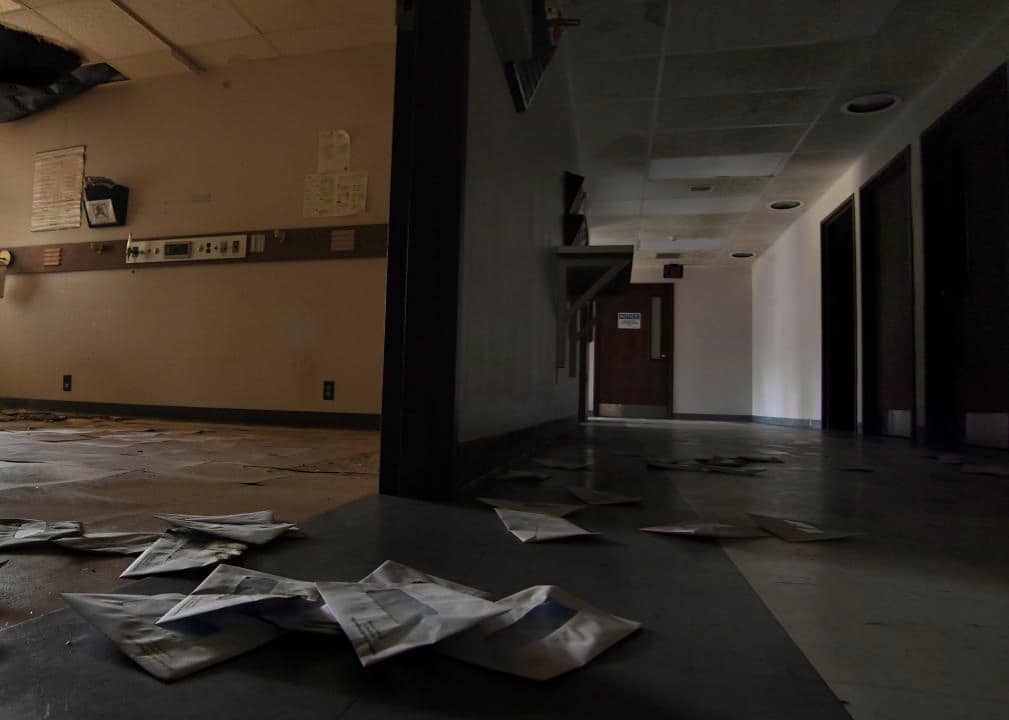
#8. Missouri
– Total rural hospitals closed since 2005: 8 (three in small or isolated rural communities)
– Total beds lost: 351
More than 42% of Missouri’s rural hospitals, or 26 of them, are vulnerable, according to a review by the Chartis Group, a health research and consulting company. Only three states top Missouri in hospitals in danger of closing. Missouri has just approved expanded Medicaid eligibility and began processing applications in October 2021. A lack of Medicaid expansion is a key risk to the health of rural hospitals.

#7. Kansas
– Total rural hospitals closed since 2005: 9 (four in small or isolated rural communities)
– Total beds lost: 268
Of the 105 rural hospitals in Kansas, 75 are running at a loss and are vulnerable to closure, according to a study from the Center for Health Care Quality and Payment Reform. Kansas, which has not adopted expanded Medicaid eligibility, ranks #40 in the country in terms of public health spending. The state is exploring a new model: rural emergency hospitals, a new designation under federal legislation approved late in 2020. One key difference between emergency hospitals and current ones are overnight stays, reflecting the trend toward more outpatient procedures. Another would be an annual federal payment to cover core facility costs.
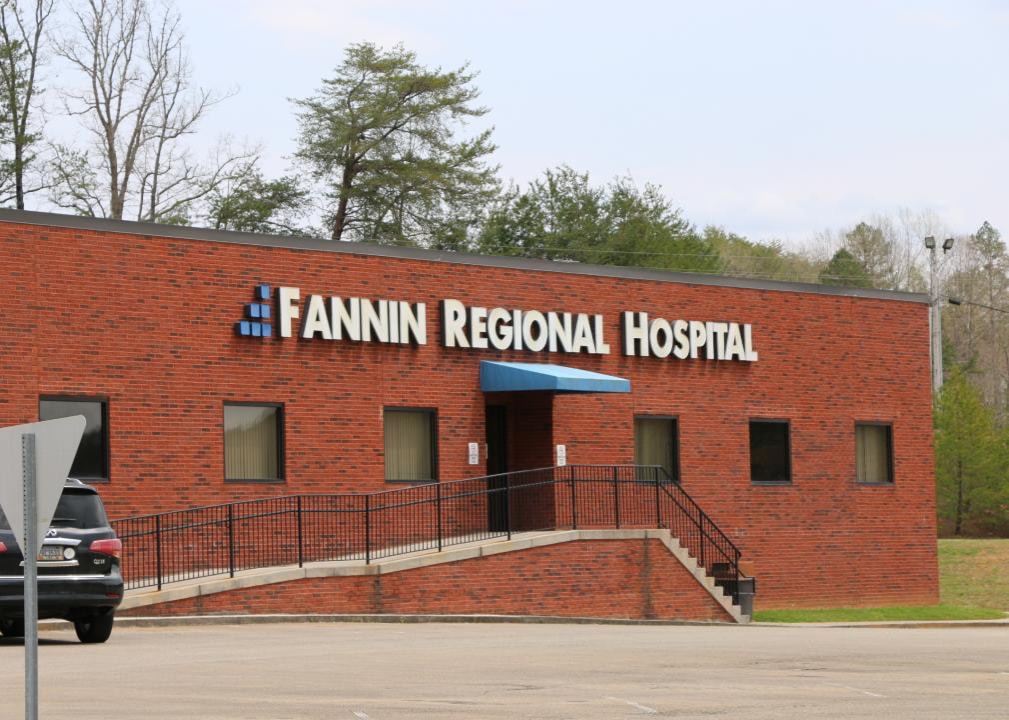
#6. Georgia
– Total rural hospitals closed since 2005: 9 (two in small or isolated rural communities)
– Total beds lost: 279
Two rural hospitals closed in Georgia in 2020, a result of financial problems deepened by the coronavirus and a decline in the number of patients even with a rise in COVID-19 cases. For many hospitals in the state, elderly poor patients do not provide the income they need to operate, and Georgia has declined to expand Medicaid eligibility. When hospitals close, the communities suffer in other ways too, with companies reluctant to move to areas without health care and local businesses also shutting their doors.
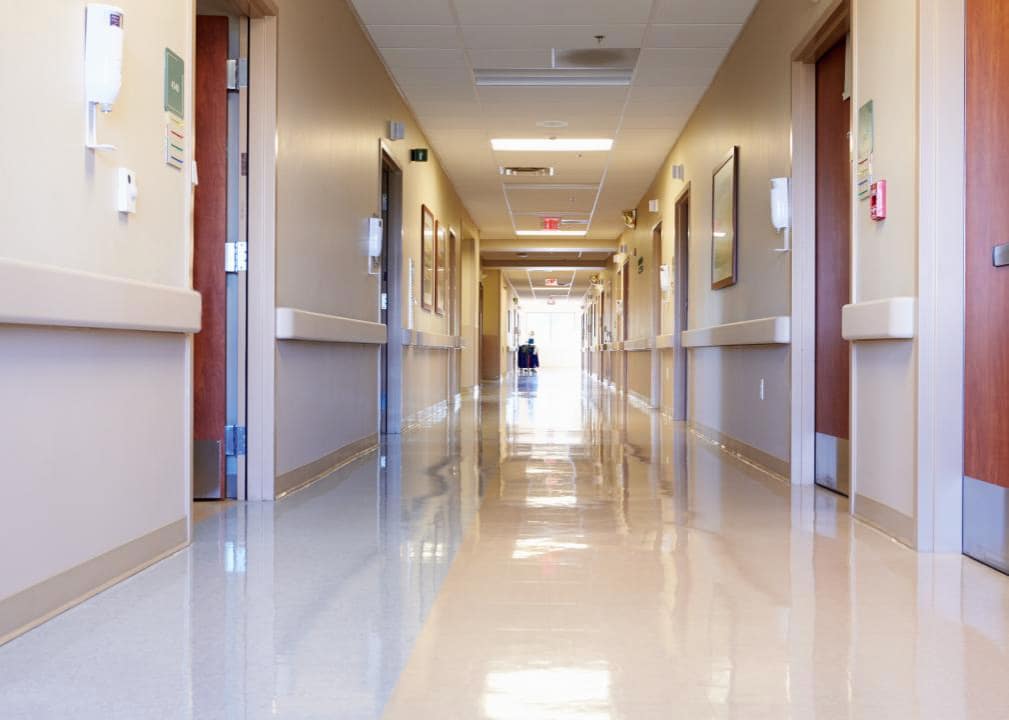
#5. Oklahoma
– Total rural hospitals closed since 2005: 9 (four in small or isolated rural communities)
– Total beds lost: 318
Five hospitals in Oklahoma that shut down or landed in bankruptcy were part of EmpowerHMS, 18 hospitals in eight states owned or co-owned by Jorge Perez, later indicted with nine others in what prosecutors said was a $1.4 billion scheme of billing for fraudulent lab work. Perez had claimed that he was trying to save rural hospitals that were struggling financially.

#4. California
– Total rural hospitals closed since 2005: 9 (three in small or isolated rural communities)
– Total beds lost: 336
A study of the closure of 92 rural hospitals in California from 1995 to 2011 found that mortality rates rose nearly 6%. The closings of urban hospitals did not have a similar fall-out, the University of Washington researchers found. In rural areas, ambulances have to travel further to patients after a hospital closes. Plus there are fewer ambulances, meaning residents might be left waiting after a car accident, heart attack, or other emergency, Dr. Nancy Dickey, president of the Rural and Community Health Institute at Texas A&M, told NBC News.

#3. North Carolina
– Total rural hospitals closed since 2005: 11 (four in small or isolated rural communities)
– Total beds lost: 361
Among the state’s rural hospitals, 30% (15 out of 50) are vulnerable to closing because of financial deficits, according to a study from the Chartis Group in 2020. Six of the hospitals were considered most vulnerable; nine were at risk. North Carolina is among the states, all Republican led, that have not expanded Medicaid coverage under the ACA. The study found that a rural community hospital in a state that has expanded Medicaid has a 62% lower chance of closing.

#2. Tennessee
– Total rural hospitals closed since 2005: 16 (nine in small or isolated rural communities)
– Total beds lost: 630
Tennessee faced the coronavirus pandemic with more than a quarter of its rural counties lacking a hospital and a fifth with no emergency room services. It has had the highest number of closures per capita, and 75% of the 25 essential access rural hospitals that remain are at high risk of closure, according to the Tennessee Health Care Campaign. The state’s decision not to expand Medicaid means its rural hospitals have high levels of uncompensated care for the low-income and uninsured residents who live in the countryside and who are disproportionately chronically ill.
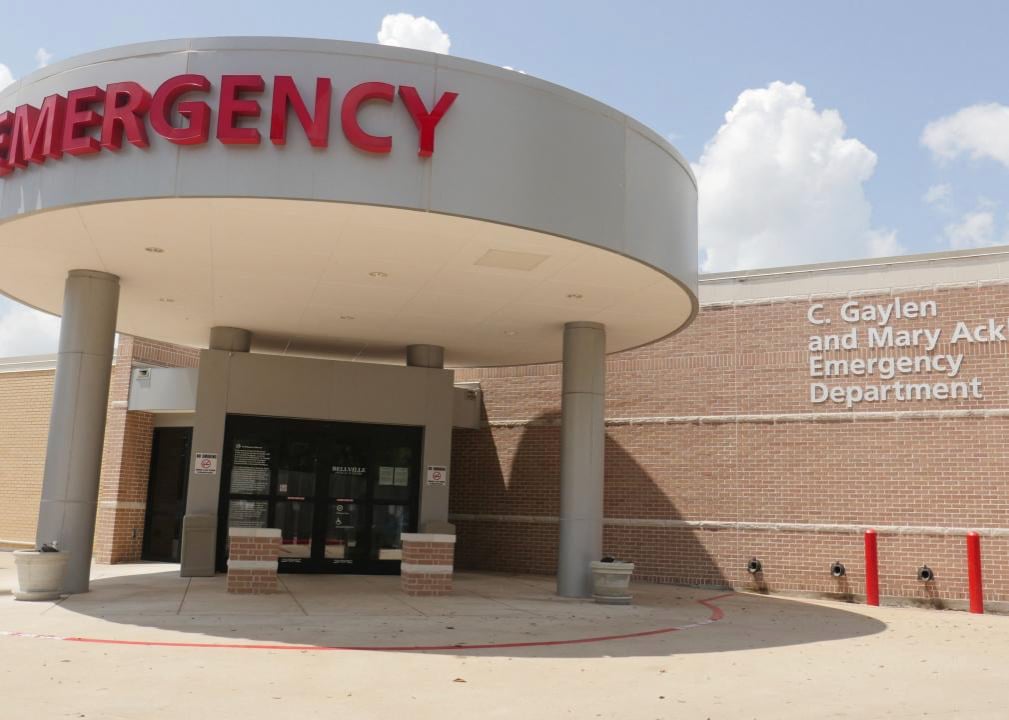
#1. Texas
– Total rural hospitals closed since 2005: 24 (16 in small or isolated rural communities)
– Total beds lost: 880
Texas leads the country in the number of rural hospital closings, and like other Southern states, it has not expanded its Medicaid coverage under the ACA. In early 2021, the Biden administration rescinded a waiver that allowed Texas to be reimbursed for uncompensated care for patients without health insurance and to be paid for health care reaching low-income residents. The move has so far not pushed Texas toward Medicaid expansion, although the Texas Legislature has increased funding for higher Medicaid reimbursement rates. The number of rural hospitals has fallen from about 300 in the 1960s to 158 today, with more than 20 communities affected by the hospital closures.
Get a Quote
Want to know how much you can save with Sidecar Health? Enter your zip code to find quotes in your area.



